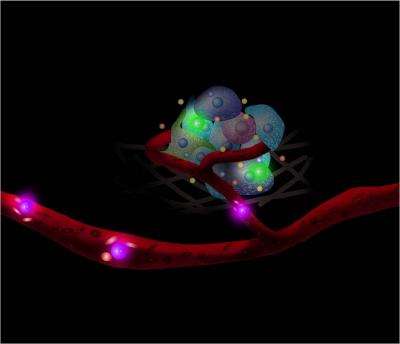Researchers provide means of monitoring cellular interactions

Using nanotechnology to engineer sensors onto the surface of cells, researchers at Brigham and Women's Hospital (BWH) have developed a platform technology for monitoring single-cell interactions in real-time. This innovation addresses needs in both science and medicine by providing the ability to further understand complex cell biology, track transplanted cells, and develop effective therapeutics. These findings are published in the July 17 issue of Nature Nanotechnology.
"We can now monitor how individual cells talk to one another in real-time with unprecedented spatial and temporal resolution," says Jeffrey Karp, senior study author, and co-director of the Center for Regenerative Therapeutics (ReGen Rx) at BWH. "This allows us to understand signaling between cells and interactions with drugs in great detail that should have broad implications for basic science and drug discovery".
The cell-signaling sensors researchers currently use are limited to measuring the activity in the bulk environment that a group of cells are in. In this study, researchers used nanotechnology to anchor a sensor to the membrane of individual cells, allowing them to monitor soluble signals within the cellular nanoenvironment. Given that cells are directly labeled with sensors permits application to transplanted cells or tissues.
"Once this is refined as a tool, and used to study drug interactions with cells on a regular basis, there is potential that it may be used for personalized medicine in the future," said Weian Zhao, lead author of the study, also of the Center for Regenerative Therapeutics (ReGen Rx) at BWH. Karp adds, "We may one day be able to test a drug's influence on cell-cell interactions before deciding on the appropriate therapeutic for each person."
The researchers are also especially excited by preliminary data that demonstrates the potential to use this engineering approach to track and monitor the environment surrounding transplanted cells, in real time, which was never before possible. This would be useful for developing a deeper understanding of signaling events that define a site of inflammation for example or the stem cell niche, which may have implications for treatment of many diseases.
"This new study takes a significant step toward the goal to eavesdrop in real-time and at high spatial resolution on communications between cells in their native environment, with far-reaching implications for the development of new drugs and diagnostics" said Ulrich von Andrian, the Mallinckrodt Professor of Immunopathology at Harvard Medical School who was not involved in this study.














